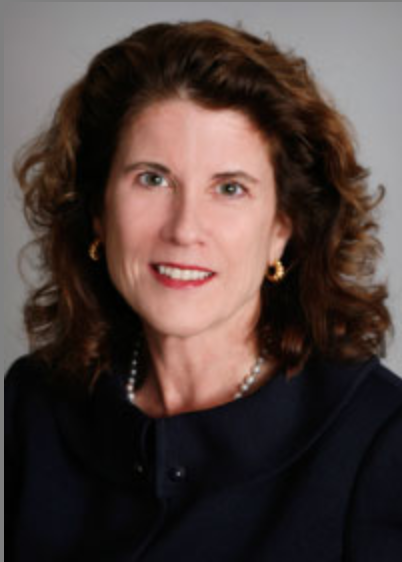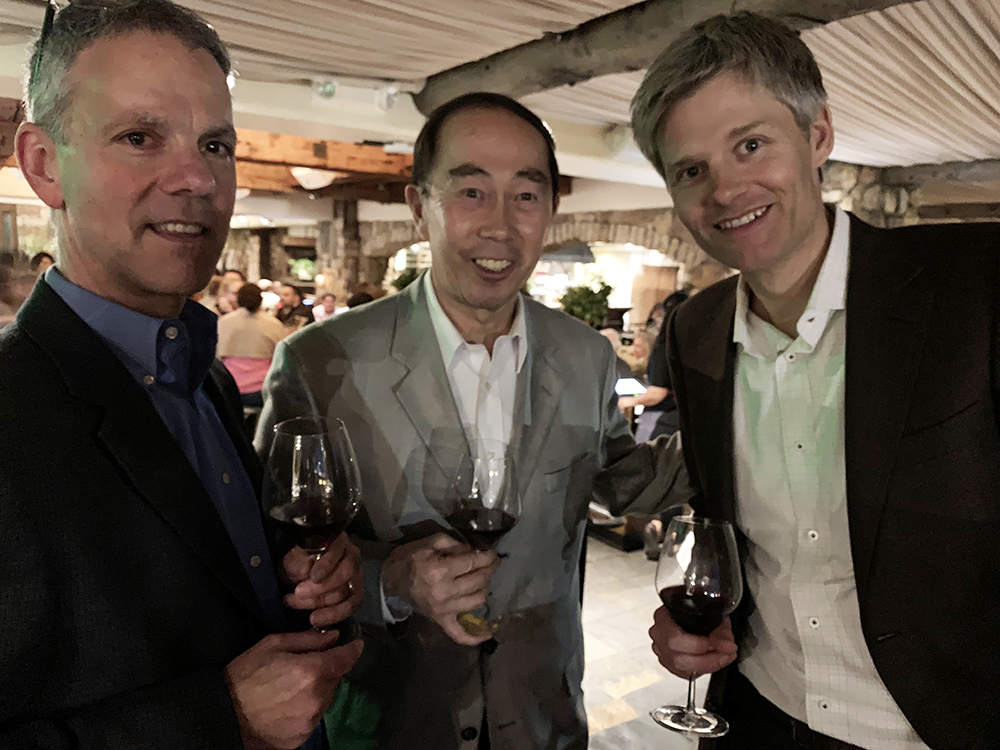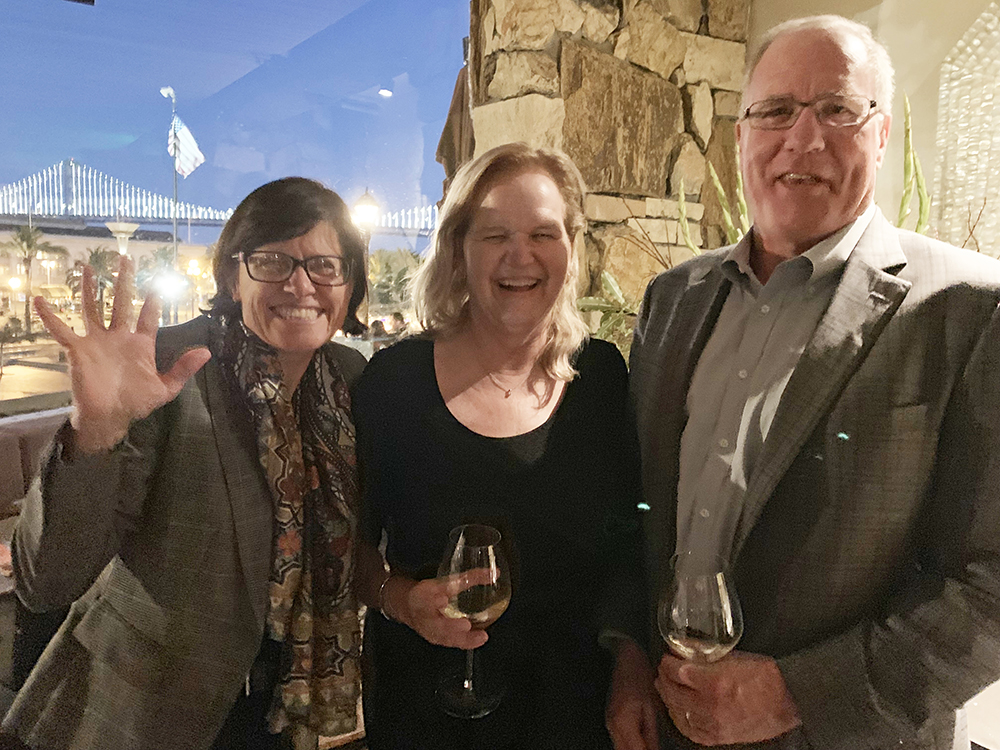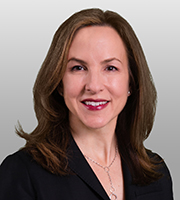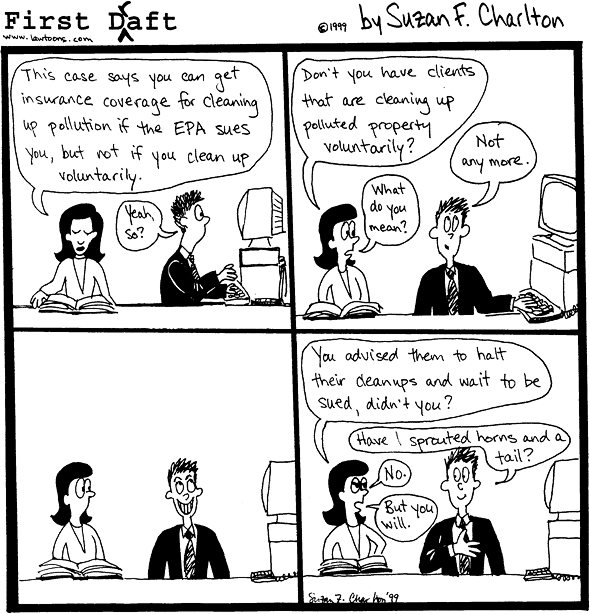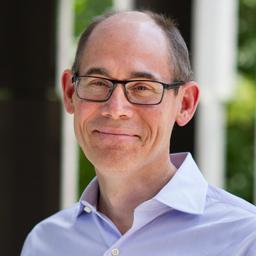March 2019 NewsletterPresident's MessageDear ACCC Fellows: Only two months until our 7th Annual Meeting, May 8 through 10 in Chicago. The Annual Meeting Committee—Linda Bondi Morrison, Jim Cooper, Angela Elbert, and Rob Kole, with the assistance of Secretary-Treasurer Sheri Pastor and Executive Director Carol Montoya—have located a new and exciting venue, the historic and newly refurbished Chicago Athletic Association. Our sources tell us that the facilities are splendid and the food terrific.
The Committee has organized a program covering a wide range of cutting-edge topics, from “Emerging Liability and Coverage Issues from the #MeToo Movement” to “Alexa- Do I Have Coverage?” You will also have the opportunity to tour the building and learn about its history. In addition to the panels, which we know from experience will be of the highest quality, we will have the opportunity to catch up with our Fellows from around the U.S. and Canada. Michael Aylward and Sheri Pastor will be installed as President and Vice President, along with the new Secretary-Treasurer. We will also introduce the winners of our Law School Essay Competition. Our strategic planning efforts continue, led by Mike Aylward. We continue to focus on committee engagement and raising the profile of the coverage. More to come! Troy Froderman, Mike Huddleston, and Neil Rambin are collaborating with the American College of Environmental Lawyers (AECOL) to explore ways that the two colleges can address topics of joint interest and educate a wider audience on environmental and insurance coverage law issues. The first step will be a joint panel at our next Law School Symposium, scheduled for November 1, 2019 at Nova Southeastern University in southern Florida. In addition to the joint panel with AECOL, the seminar will focus on “bad faith”. I am told that bad faith in Florida is a unique animal, like no other state in the country. Come find out how to protect your insurer clients, or stretch the boundaries for your policyholder clients. Take advantage of our technology capabilities: You should have received the request for links to your personal or firm insurance blog. Please respond. We want to provide our Fellows easy access to the updates and insights from other Fellows. And we are now capable of hosting webinars. Let us know if you would like to present one. We continue to grow! We now have 301 Fellows, Emeritus Fellows, Honorary Fellows, and Judicial Fellows. As always, we are looking for highly-regarded Fellows who meet our membership criteria, particularly women and ethnically diverse attorneys, and policyholder attorneys. Please provide any suggestions to the Membership Committee at [email protected].
Mary McCutcheon REGIONAL EVENTSWhile most of the country watched the State of the Union address on February 5, the ACCC Fellows in the San Francisco Bay Area celebrated the “State of the ACCC” at Sens Restaurant. We engaged in our typical friendly insured v. insurer sparring, discussed upcoming events and initiatives, and brainstormed about potential new Fellows for the College. In particular, we discussed the upcoming Annual Meeting at the Chicago Athletic Association. Some members shared stories of visiting the club many years ago, before the refurbishment that turned it into the fabulous facility that we look forward to visiting in May. We assured them that they are in for an extremely pleasant surprise. The food was delicious and more than plentiful, and the wine was excellent, as befitting an event in San Francisco. Many thanks to new Fellow Tyler Gerking and long-time Fellow Sarah Thorpe for organizing the event. Also in attendance were: Michael Barnes, Bruce Celebrezze, Andy Downs, David Goodwin, Christine Haskett, Mary McCurdy (and guest Kevin McCurdy), Tony Leuin, Mary McCutcheon, Phil Matthews, Julia Molander, Barry Weinstein, and Ray Wong.
Michael Barnes, Ray Wong & Tyler Gerking
David Goodwin & Bruce Celebrezze
Sarah Thorpe, Mary McCurdy & Kevin McCurdy MEMBER SPOTLIGHTSuzan F. Charlton, Lawtoonist (and Special Counsel, Covington)
Suzan Charlton has represented policyholders in insurance coverage disputes for more than 20 years. We’ve also discovered she's a talented “lawtoonist.” Communications Committee member Angela Elbert peppered her with some questions about her talent for finding humor in the law. Q: Rumor has it that in addition to being a badass policyholder-side insurance coverage lawyer, you also moonlight as a cartoonist. What’s the story there? Suzan: It depends on your definition of cartoonist. Are you still a cartoonist if you haven’t drawn anything new in more than a year? More than 5 years? Q: We’ll say yes. So then it’s true. You are a cartoonist. And specifically, a cartoonist about lawyers and the law, is that right? Suzan: Yes. The official job title is “lawtoonist.” Q: How did you get started with cartooning? Suzan: I blame law school. Sitting in the back row, I was a doodler more than a meticulous note-taker. There were no laptops back then, so alongside my pen-and-paper notes, I would sketch my professors or draw other law students, adding captions or speech bubbles poking fun at them or, more often, lampooning the situation. Like, “The Ten Law School Commandments” or “What to do now that your mediocre grades have been posted” (which was totally non-autobiographical, I swear). The drawings probably wouldn’t have gone anywhere—especially back in the days before social media—but some of my cartoons got passed around among classmates, and eventually one made its way into the hands of the editor of the law school newspaper. The editor liked what she saw, and soon I was publishing in the paper on a weekly deadline. Q: What was the physical process of making cartoons during law school? Did you carry a drawing board and ink pens around with you? Suzan: Definitely not. I drew every cartoon on plain sheets of copy paper with two ordinary pens—a Sharpie and a fine tip rollerball. This was seriously low tech. Half the time I was scribbling something at the last minute, just before deadline, in the law school’s (dreadful) basement cafeteria. Several “Weird Law Words” were done that way. So many of those early cartoons were done hastily at the last minute, with little forethought, which sometimes got me into trouble.
Q: Trouble? Care to share any examples? Suzan: When I was in law school, readers—law students with nothing better to do with their time—would write in to the paper and fight about whether my latest cartoon was horribly offensive or pure genius. I have to say, whenever that happened, it always surprised me, because those particular cartoons typically involved the least amount of sophistication (or the greatest amount of ignorance). My most controversial offering was a cartoon entitled “Dress the Dean.” I drew the dean as a paper doll, surrounded by items such as a “budget-chopping axe” and “tuition-hiking boots.” (Geddit?) But remember: at the time, Georgetown’s dean was a woman, and what had I drawn? A cartoon about her clothes … including “spectator pumps that match nothing” (which was true). That one cartoon generated letters to the editor for weeks. Some letters reviled me as a sexist, while others touted me as the next Garry Trudeau. Q: Seriously, you didn’t get that drawing a cartoon of a powerful female, the dean of the law school, as a paper doll might be offensive to women? How did that happen? You even went to Vassar! Suzan: I know! Mea culpa. Today I am sure I would fall into the protesters’ camp. I was being deliberately provocative, yes, but I also didn’t understand the seriousness of the issue then—in fact, I naively thought that by the 1990’s we were well past needing to be protected from sexism. Yet, here we are in the 21st century, and… well. I digress. Q: So your more recent cartoons, what are those about? Suzan: My subject matter evolved to deal more with law firm life. So instead of law school professors it was bosses; classmates became colleagues and other counsel. But many of the core issues remained the same—time pressures, relationships, management issues, absurdities found in cases and the federal rules… and of course there is never a shortage of “weird law words.” Q: Do you have any favorites? Suzan: Oh, sure. The one called "Pro Bono Hours," where pro bono work was counted toward billable hours at the same time that the billable hours minimum was raised. And “Big Law Firm Job,” about the cycle of paying off law school loans by getting a law firm job, which was the goal of borrowing money to go to law school, that's a classic.
Q: Wait, YOU are the author of Big Law Firm Job? You are not going to believe this, but I had that Lawtoon hanging on my bulletin board for years and years and had no idea it was you, nor did I even know you back then. What a small world. Where do you get your ideas? Suzan: Reality. Almost nothing in my cartoons is pure fiction. “Pro Bono Hours”? That happened. The stuff that people say and do in law school, in law firms, even on the record in litigation, is more ridiculous than anything I could make up. The only thing I keep off limits is clients; no case or client I have ever worked for in reality has ever made it into a Lawtoon. (I should mention here that all names and likenesses have been altered to protect my own neck.) Q: So are you still drawing today? Suzan: Not as much as I would like to. Practicing law made it hard to continue to draw and publish regularly; having a family made it impossible. But I do keep a draft folder on my desk, just in case. Some of those unfinished ideas are bound to morph into Lawtoons some day. Suzan Charlton’s cartoons can be found on her website, www.lawtoons.com, and in the archives of the Georgetown Law Weekly. She is on Twitter @Lawtoonist. All opinions are Suzan’s; nothing herein represents the views of her past or present employers or clientsThe Class Is Called to Order!—An Interview with the ACCC’s Honorary FellowsInterview Conducted by Michael Aylward, Vice President, American College of Coverage Counsel Our College is honored to have among its Fellows some of the most prominent professors of insurance law in the United States. To celebrate the College’s fifth birthday this year, President-Elect Michael Aylward spoke with four of our Honorary Fellows to get their thoughts about the trials and tribulations of teaching insurance to young law students.
Kenneth Abraham University of Virginia: David and Mary Harrison Distinguished Professor of Law Teaching insurance law since 1977
Tom Baker University of Pennsylvania: William Maul Measey Professor of Law and Health Sciences Teaching insurance law since 1992
Leo Martinez UC Hastings College of Law: Albert Abramson Professor of Law Teaching insurance law since 1990
Jeff Stempel University of Nevada-Las Vegas: Doris S. and Theodore B. Lee Professor of Law Teaching insurance law since 1989 Q: Why do you think that your students decide to study insurance law? Stempel: Many of students have worked summers or part-time in law firms where they discovered the importance of insurance, even to those who are not coverage lawyers per se. And many come to love the topic almost as much as an ACCC member. That can make for enthusiastic class discussion that would surprise those who mistakenly think insurance is a dry/boring topic. When there’s a mix of students with policyholder side and insurer side law clerk experience, some very spirited debates can ensue. Baker: Over the years, I’ve come to the conclusion that there are five reasons why law students take my insurance course: 1. They have a family member who is a lawyer who tells them all lawyers need to understand insurance. 2. They take torts with me and get interested in learning more about insurance. 3. One of my colleagues suggests to students that they take insurance. 4. They get exposed to insurance in their summer job. 5. The time slot works for them and they’ve heard that I’m not a terrible teacher. Martinez: Sadly, I think most of my students take my class because of my reputation for teaching and not for the substantive knowledge. All too few of them have an appreciation for the course before taking it. Abraham: They hear from students who have taken the course that it is “surprisingly interesting.” Stempel: Although the class is normally enthusiastic, it’s still a smaller group than I would like. Unfortunately, the system discourages students from taking elective course like insurance because there are so many subjects that they need to study for the bar exam. Not every listed topic is on every year’s bar exam but it forces students to prepare as though it could be. This is an example of how decisions by the profession (not always wise ones) impact legal education in unseen ways. Q. What is it about insurance law that makes it a worthy part of a law school’s curriculum? Martinez: There is a great quote to the effect that you can’t walk in a straight line for 10 feet without running into an insurance issue. Abraham: It is an important subject in practice, so it is both practical and intellectually stimulating. Baker: The way that most people teach the course, it serves as both an advanced torts class and an advance contracts class. It can also be taught as a regulated industries class. And it provides useful background knowledge for both litigators and transactional lawyers. Stempel: Insurance is important as a public policy course because it is so fundamental in a modern industrial society. Knowing something about risk and the role of insurance in commerce, compensation, and regulation is always useful for training thoughtful lawyers. All litigators need to know about insurance if they are to be effective in vetting matters, selecting cases, drafting complaints, and engineering settlements. Stempel: Students tell me with some frequency that taking insurance in law school changed their practice plans. One memorable example for me is my very first research assistant, who was a student in the first insurance class I taught. He had no background in insurance it almost at first sight. He’s worked with Lloyd’s syndicates and been a partner in two prominent insurance coverage firms. Q. What do your students seem to find most surprising about insurance law? Martinez: I’m gratified that students realize that insurance law is actually interesting. Each case is a vignette of human behavior and they appreciate the perspective. Baker: Few students initially grasp the complexity of the liability insurance law rules related to claims management and the way that those rules affect litigation incentives. They are also surprised by the degree to which hot button social issues like discrimination and privacy show up in insurance law. Abraham: My students are surprised to find that insurance is an incredibly interesting, intricate subject, and that they can learn to read an insurance policy competently. Stempel: Perhaps the biggest surprise for students who are relatively unfamiliar with insurance law when they arrive in class is that it is an interesting topic with tentacles far beyond a particular coverage dispute. For students who come to class after a summer with a policyholder-side or an insurer-side firm, I think the biggest surprise is not only that the other side is not as crazy as they thought but also that there are many issues lurking below the surface that often get missed by busy practitioners. Q. Has the way that you teach insurance law changed over time? Martinez: Apart from technological tools like Powerpoint, not really. I still spend a lot of time explaining the background of insurance coverage disputes and emphasize how most insurance cases are about real. State Farm v. Campbell is a great example of an important insurance cases with a compelling underlying story. Abraham: The subject matter of my lectures has certainly changed over the years. When I first started teaching insurance in the late 1970s, there were no insurance coverage cases involving long-tail liability. Those cases have created a whole new body of insurance law doctrine that I teach now. As far as teaching technique, I don’t think I’ve changed much. The class is a mixture of inevitable information transmission and dialogue between me and the students. Baker: I increasingly emphasize the practical implications of the class for litigation. In terms of coverage, I have expanded the time I spend on insurance regulation and reduced the time I spend on health insurance. Stempel: This may reflect my pedagogical recalcitrance but I still like a traditional Socratic method discussion, using a white board to diagram cases or relationships between the parties. Computer use is banned in class. Too many kids hide behind the screen or use extensive typed notes as a crutch. Class discussion is better without the distraction. The emphasis in insurance classes has, of course, changed over time. While there’s always a need to cover the basic risk and insurance theory as well as legal doctrine, emphasis shifts to emerging areas or more controversial areas or current disputes. For example, I spent time in the Spring 2018 class discussing the ALI Restatement of the Law of Liability Insurance and the areas of friction between insurers and policyholders regarding the RLLI. It was not only something I couldn’t have taught in 1989 but something I could not have imagined in 1989. Q. What are you working on now? Abraham: I’m writing an article entitled “The Long-Tail Liability Revolution,” in which I examine the ways that long-tail liability has generated most of the cutting-edge issues in tort and insurance law over the last fifty years. Martinez: I’ve been working a lot lately on international insurance issues. I have been collaborating with Professor Pierpaolo Marano of the Università Cattolica del Sacro Cuoren in Milan on a paper tentatively titled The New EU Rules on Insurance Customer/Policyholder Protection Viewed Against the NAIC Model Acts. My chapter on They are: Cyber Losses and Cyber Liability: Three Basic Structural Issues to Resolve will appear as a chapter in a European Insurtech book that I expect from the editors any day now. I have nearly finished a paper on Variations on a Theme: Deductibles, Self-insured Retentions, Retained limits, and Fronting Policies; and I’m about two thirds finished with a piece titled The Uncertain Landscape of an Insurer’s Reservation of Rights and Insured/Claimant Settlements. Finally, I’m collaborating with Bob Jerry and Doug Richmond on an insurance/risk management text for undergraduates. Stempel: I am working on three insurance projects right now: 1) a proposal for a single-volume summary of U.S. Insurance Law for Oxford University Press, 2) a comparison of first-part and third-party bad faith and administrative remedies in the U.S. and China for a conference in China later this year and 3) an article analyzing plain meaning from a linguistic and experimental perspective. Q. Are there ways in which the ACCC can help with legal education? Abraham: I think the ACCC is doing a good job. The annual conferences at law schools are terrific. Martinez: I also like the idea of the law school symposia. The January 2017 symposia at Hastings was quite successful (but more students would attend if you provided free food). Stempel: Insurance is a bit different than many areas of law because so many of the leading coverage lawyers are also very active on the scholarly front – which provides very helpful secondary authority for professors preparing courses and both faculty and student scholarship that often builds upon scholarly writing by practitioners. My hope here is that ACCC members will keep doing what they’re doing, even if it produces influential scholarship with which I disagree. Baker: ACCC members would make great adjunct faculty. Most law schools don’t have a full time faculty member who knows enough about insurance to teach the course. The hardest thing for many faculty is developing realistic, practical, and not-too-complicated problems and case studies that they can use to supplement their regular classroom teaching. If ACCC Fellows do teach a course, casebook authors (myself included) would be happy to give you tips and background materials to use and case studies that would bring the real world into the classroom. Part Two of this interview will be published in our next newsletter. INSURANCE BLOGSThe College is curating a list of blogs published by our Fellows and their firms for inclusion on our website. We have content from both the insurer side and policyholder side. Click here for the full list of blogs. If you would like to add a blog to the list, email [email protected]. MEMBER NEWSSkarzynski Black Welcomes Four New Partners & Announces Name Change Skarzynski Black announced the addition of four partners to its Chicago office, including ACCC Fellows Michael M. Marick, James H. Kallianis, Jr., and Karen M. Dixon. Mike, Jim and Karen have practiced together for more than 20 years. In recognition of Mike’s reputation and expertise, the firm also announced that it is changing its name to Skarzynski Marick & Black LLP. Mike will also join the firm’s Executive Committee. Click here to read more. Fellows Publish Top Coverage Decisions Law 360 published “5 Key NJ Insurance Coverage Decisions From 2018, by ACCC Fellow Robert Chesler and his colleague Christina Yousef. You can hear Bob discuss these cases at our 2019 Annual Meeting and click here to read the full article. ACCC Fellow Randy Maniloff published the 18th Annual “Top 10 Coverage Cases of the Year” in the January 3 issue of Coverage Opinions. Click here for the full list. Adler Announces New Practice ACCC Fellow Marion B. Adler has announced the opening of Adler Law Practice, LLC. Her practice areas will remain the same--commercial litigation and pre-suit dispute resolution—as she represents businesses in pursuing insurance recoveries and resolving commercial coverage disputes. Rosen Joins JAMS Insurance Practice Group ACCC Fellow Peter K. Rosen recently joined the JAMS Insurance Practice Group. Peter is based in Los Angeles and will serve as nationwide as an arbitrator, mediator, special master and neutral evaluator. Click here to read more. |


